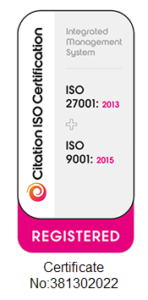Vision Meets Strategy: 5 Steps to Making Your Virtual Meeting Engaging
Virtual engagements – or at the very least hybrid meetings – are here to stay. Face-to-face access to healthcare professionals is expected to remain difficult even after the pandemic ends, and, in the interim, pharmaceutical companies have been working to repurpose their content for full virtual engagements.
But, as I explored in my last blog, imitating live events in the virtual world won’t necessarily work and may, in fact, lead to audiences switching off – figuratively and literally. So, what do you need to do to create an effective virtual engagement strategy? I have developed a five-step strategy framework to help companies create productive and absorbing virtual meetings – ones that will hold your audience’s attention and encourage HCPs and other stakeholders to return again and again.
Step 1: Take stock and develop a diagnosis
You need to understand and respond to where you are on your virtual meeting or digital journey. Do you have a strategy, initiatives and processes in place to engage your audience? If you are completely new to virtual, it’s likely you won’t have considered these steps, or you may have adopted some processes but need guidance on other areas, be it content, agenda, technology or methods to encourage audience interaction.
You also will need processes in place to measure the effectiveness of your strategy, determine how you are going to gather feedback and how you will use and share data most effectively.
At this stage, it makes sense to determine whether you have the resources, skills and experience in-house to effectively manage an engaging and creative virtual meeting, or whether you would be better served bringing in external experts who can help you set up your meetings, run them for you, and either provide you with a technology or train you to make the most of your existing platform.
Step 2: Set the future vision
Ask yourself what virtual and digital means to you as an engagement platform. Is it a stop-gap measure until you can meet HCPs and other stakeholders in person again, or will it become an integral part of your broader communication approach? A basic meeting might suffice for in the short-term meetings, but will it be enough for large salesforce engagement sessions? And does your internal know-how and technology stack up for engaging sessions with break-out meetings and quick-fire polls?
Digital is engrained in most industries today and will likely be the norm for communicating with busy HCPs in the future, with indications that medical advisory boards, for example, may be easier to organise and plan through virtual or hybrid meetings. If these types of meetings are integral to your business, having a robust digital strategy will be important.
Step 3: Determine the guiding policy
This step will help you decide the approach that works best for your circumstances or any intervention needed to overcome obstacles identified in step one. The guiding policy will include decisions around which technologies and tools to adopt, and whether you need to organise training or workshops for your teams to ensure smooth and productive meetings.
This is also where it can make sense to bring in external resources to address internal gaps, for example engagement experts who can help you make best use of your platform, assess your agenda and content, and develop creative strategies to engage your audience. While you likely have the content developed, it’s never as simple as taking a presentation intended for a live meeting and presenting it verbatim in a virtual setting. You need to understand what works and what doesn’t in such settings, how to hold your delegates’ attention and encourage dialogue, and what approaches work best to create a positive meeting experience for everyone.
Step 4: Identify actions to carry out the guiding policy
At this stage you want to establish a roadmap to determine what you need to do and where you should start. Again, turning to external experts who are well-versed in virtual engagement – such as Open Audience – will ensure you get your roadmap right.
Experts can provide training on your chosen platform or even recommendations on platforms and can also facilitate and run those meetings for you, ensuring the platform is used to its fullest potential. They can also help you plan and structure your meeting and provide clear guidance on how best to repurpose your content for maximum audience participation and enjoyment.
Step 5: Measure and optimise
It’s impossible to say at this stage how long we’ll need to keep meeting virtually or when HCPs and other stakeholders will be comfortable to meet in person again. With this in mind, companies must keep track of their virtual meetings.How were they received? What were the outcomes? What was the feedback? And has engagement fallen, stayed the same or increased?
This information and data will help you determine what needs to be changed or improved for future sessions and what processes you should consider in order to make your virtual meetings more productive.
Guest blogger Scott Newall is the founder of Newall Brand Consulting, which was established to help brands to differentiate, grow and launch in the United States.

